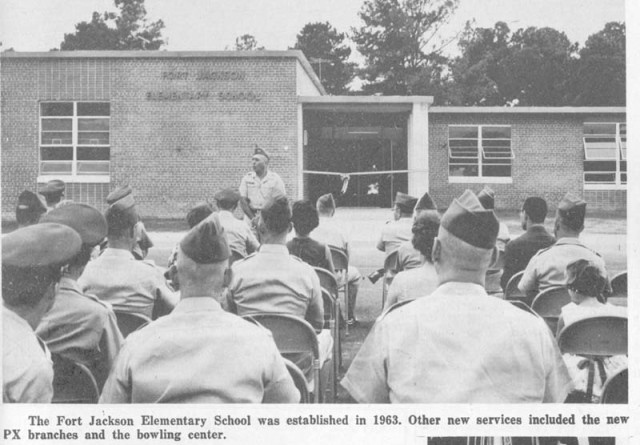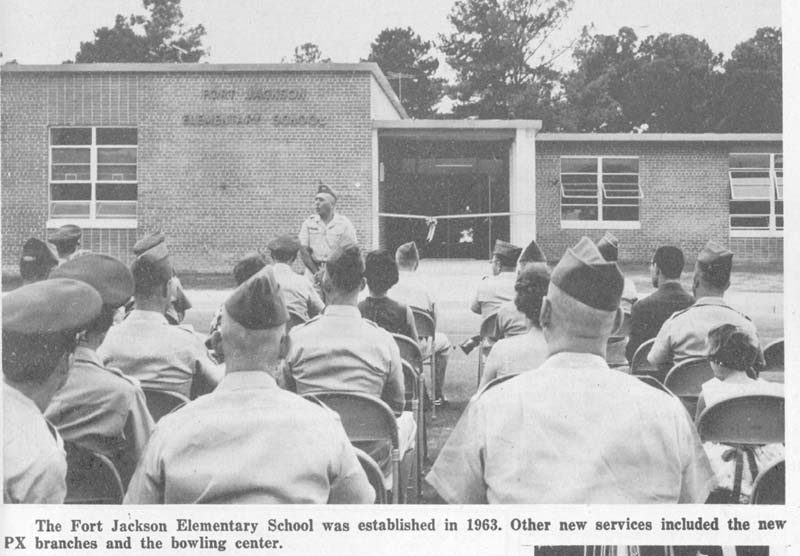FORT JACKSON, S.C. (Army News Service, Feb. 26, 2007) - Hood Street Elementary School, built in 1963, was considered one of the first permanent structures at Fort Jackson, and it was also the first public school in Columbia to integrate students during the civil rights movement.
The South Carolina Constitution of 1895 said that "separate schools shall be provided for children of the white and colored races, and no child of either race shall ever be permitted to attend a school provided for children of the other race."
The next year the Supreme Court upheld that racially-separate facilities were constitutional, so long as they were equal.
"I still remember the days of separate but equal, but in those days, that was how it was done to avoid integration," said Dr. Thomas Silvester, Hood Street Elementary School's first principal. "I never saw other black educators because they held separate meetings."
"The military was integrated already, but here were these children who lived on post and who were bussed to segregated schools off post," Silvester said.
Public Laws 81-815 and 81-874 were approved by the U.S. Congress in 1950, which provided funding to the Department of Defense for construction of schools and educational activities.
The laws allowed the already integrated military to establish integrated schools for all Soldiers' children on military installations.
"It is a part of history that I wish did not happen or have to be that way to begin with," said Thelma Gibson, Hood Street Elementary School's current principal. "It should not have had to take a presidential act to make people act the way they should, and now we need to use that part of history to move forward, not backward."
Hood Street Elementary School, originally named Fort Jackson Elementary School, fell under the Secretary of Defense announcement dated 1953, that all Department of Defense schools on military installations would be integrated no later than Sept. 1, 1955.
"When I heard that they were going to build an integrated school on post, I thought about
applying," Silvester said. "My wife encouraged me to apply, even though not all of my colleagues did. When I was hired for the position, I was somewhat surprised and it ended up being a wonderful experience."
Hood Street Elementary School was modeled after Richland School District Two's Conder Elementary blueprint and called a 90-day wonder because that's how long it took to build.
It opened in August, just in time for the 1963-64 school year.
The school opened as an integrated school, for all children living on post in government quarters. The first year, the school had 210 students, six white teachers, one black teacher, one hispanic teacher, one secretary and one custodian.
"It seems that back then Fort Jackson and the military set the standard for integration of schools in Columbia and was instrumental in the process of social change," Silvester said.
He said he is proud of the military for leading the way and being a part of the process. Without realizing it, he was thrust into a situation that molded his future. He was the principal, as well as the music and physical education teacher.
"We did what we had to do for the children. That's all that mattered," he said.
Silvester later became the superintendent of all the post schools until his retirement in 2004. He now works part time for Richland School District Two as a liaison to Fort Jackson families.
Silvester recalled that one of his first memories of the school was that it was not originally permitted to fly the American flag. Army policy stated that only post headquarters could fly the U.S. flag, Silvester said. But with a quick policy change, that restriction was eliminated.
"The image I keep conjuring up today in my mind is children going out to recess on that first day of school in 1963, and black and white kids with their arms around each other," Silvester said. "As soon as I saw that, I knew that there would be no problem integrating this school."
Today, the school is the same brick and mortar structure that has been there since its opening. "It holds so many memories," Gibson said.
Its doors, however, will be closing at the end of the 2006-2007 school year. Gibson is saddened by the loss of such a historical school.
"As the first recognized public elementary school in Columbia to integrate, it will forever be remembered by those who have worked at or gone to the school," Gibson said.
(Nichole Riley writes for the Fort Jackson "Leader.")


Social Sharing